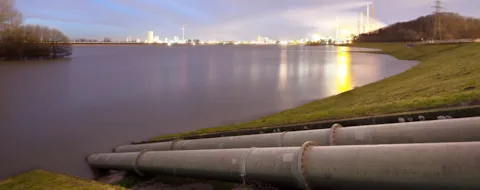Design and Operation of CO2 pipelines – CO2SafePipe
Joint Industry Project
Close knowledge gaps in the transportation of CO2 in pipelines
The aim of the CO2SafePipe Joint Industry Project (JIP) is to close knowledge gaps identified in the transportation of CO2 in pipelines covering CO2 in both gas phase and dense phase, CO2 stream composition and its effect on corrosion and materials, and the risk of running ductile fracture.
The JIP’s outcome will enable both the safe and cost-effective design of new CO2 pipelines and the repurposing of existing pipelines.
Challenge
Carbon Capture and Storage (CCS) may still be considered a young industry compared to oil and gas. Safe and cost-effective solutions for both new projects and existing assets are key for the development of a sustainable CCS value chain. As the sector is maturing and experiences are gained through R&D and projects, keeping the industry standards up to date and aligned with the latest knowledge is central to quickly tackle challenges as they arise.
Over the recent years, several operators have been considering repurposing existing pipelines for CO2 transport. For the design of new pipelines, it is an established opinion that transportation of CO2 in dense phase rather than gas phase is preferable. However, several re-qualification studies point to the transportation of CO2 in gas phase as an attractive solution. As a result, improved guidance and recommendations for selecting dense phase or gas phase have been identified as a need in the industry. Furthermore, it is desirable to limit the need for cleaning CO2 from the various industry emitters of harmful impurity elements by keeping its composition as wide as possible without jeopardizing the risk of corrosion and material degradation. Arresting running ductile fractures in pipelines transporting CO2 has proven to be more challenging than in transporting natural gas (NG), and many pipelines fall outside the applicability range of the requirements laid out in DNV-RP-F104 "Design and operation of carbon dioxide pipelines.
Objective
This DNV Joint Industry Project will look into the benefits and disadvantages of transporting CO2 in gas phase compared to dense phase, and how the phase chosen impacts the design or re-qualification process for existing CO2 pipelines. The JIP will further look into increasing the acceptable level of impurities without raising the risk of corrosion and material degradation and extending the applicability range of the running ductile fracture design requirements in DNV-RP-F104, which also includes evaluations of fracture arrestors.
The CO2SafePipe JIP will provide general recommendations for industrywide use and will lead to an update of DNV-RP-F104.
Approach
The proposed scope of work is broken down to the various work packages (WPs)
- Description of dense phase vs gas phase
- CO2 stream composition
- Running ductile fracture
- Fracture arrestors - Solutions and spacing
- Low temperature brittle ductile fracture
- Environment Leak detection technologies
- Pre-commissioning w/o the system pressure test
- Requalification / repurposing
- Compare NG with CO2 – limit states (onshore / offshore, CO2 gas/ CO2 dense/natural gas)
The scope and guidance for Phase 1 of the JIP are intended to be covered by desktop studies. A prospective Phase 2 covering full scale testing will be discussed and planned for based on the output obtained from the relevant work packages and in agreement with the Parties of the JIP as a next step.
Project details
The JIP will be managed by DNV, and typical participants are operators, line pipe manufacturers, EPCI-contractors, and authorities. It is planned to be kicked off in the 2nd quarter of 2023.
The project timeline is to finish the JIP within 12 months. DNV will thereafter update DNV-RP-F104 based on the JIP’s output.
Project status
The JIP proposal has been distributed to the industry and is open for participants to join. Information meetings will be arranged as needed.
DNV is open to discuss different topics to be addressed with the stakeholders.
